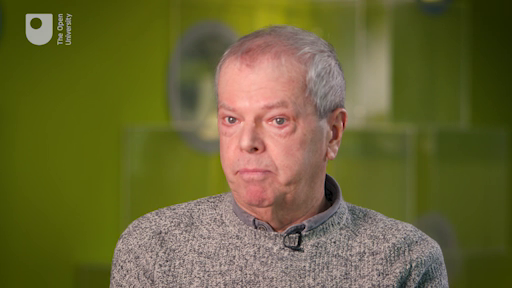3 Life in the community
Bernadette Lee, or Bernie, was born in 1950, in Watford, Hertfordshire.
Unlike Mabel, Bernie spent only a short time in an institution (Cell Barnes). Instead she spent most of her life living with her family, and then later in a residential home, before finally moving into her own flat when she was 57. This was despite the fact that, when Bernie was born, there was very little support for people with learning disabilities who did not live in institutions.
Activity 5 Bernie's early life
Watch Video 6 in which Phil, Bernie’s older brother, talks about his sister’s early life, then answer the questions that follow.

Transcript: Video 6
- How did Bernie and Phil’s mum learn that her daughter had Downs Syndrome?
Answer
She was told when her daughter had a check-up that she was ‘mongoloid’.
- How did that affect her, according to Phil?
Answer
She appears to have been shocked, so shocked that she almost walked into the road until her sister found her.
- Why did Bernie end up in Cell Barnes?
Answer
It’s not absolutely clear why Bernie went into Cell Barnes, but Phil, only a young child himself at the time, believed it was because another child had been born and his mother was struggling to manage.
- Why was this a traumatic memory for Phil?
Answer
Phil’s memory is of his little sister waving her arms to ask to go home with the family after visits. Even 60 years later, this memory brings tears to his eyes.
Bernie’s experiences were not unusual in the 1950s. Many families who had children with learning disabilities at this time were told that the best thing they could do was put the child in a home, forget about them and try for another child. There seemed to be no efforts to offer practical support or advice and families were just left alone to manage if they decided to care for their child in the family home. If they could not manage, then an institutional place was the only option.
Eventually things did get better, but only slowly. You will continue the story by building on the timeline from the late twentieth century to early twenty-first century.
